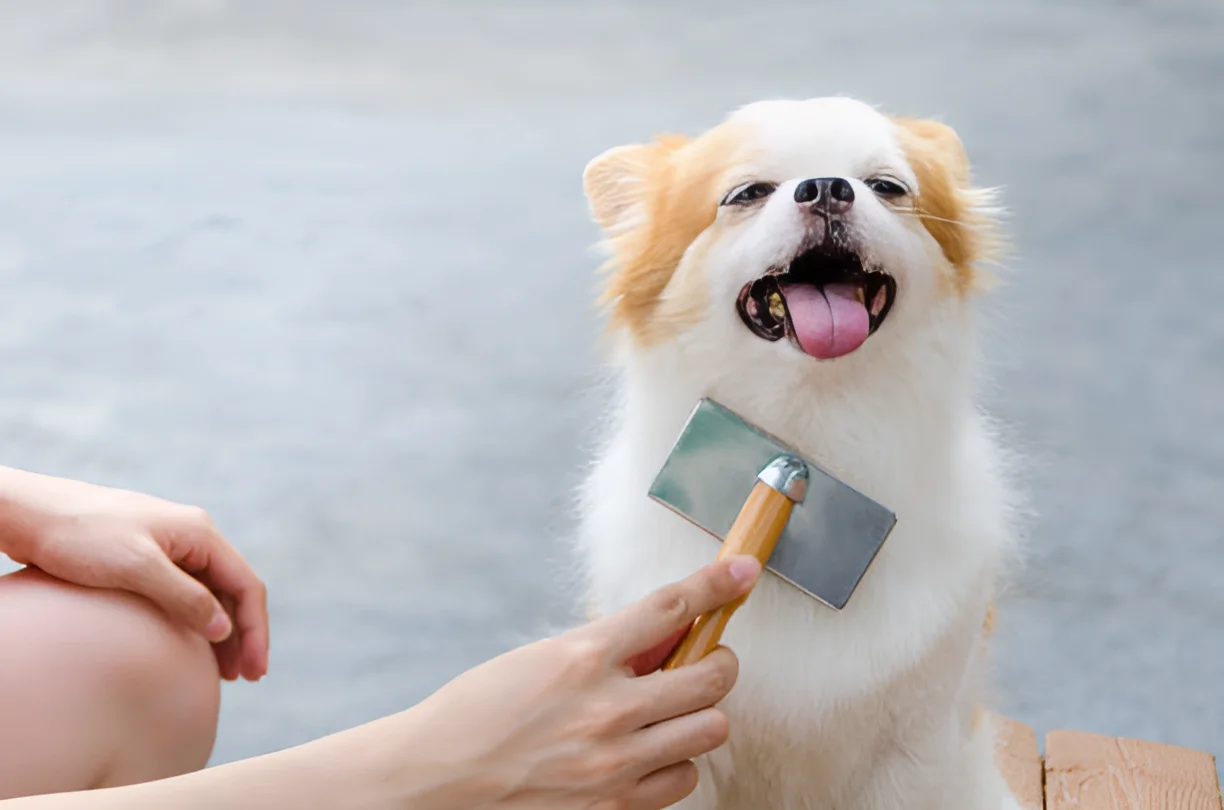To effectively brush your dog, start with the head and work your way down to the tail, ensuring you cover all areas systematically. Brushing your dog is an essential part of their grooming routine, helping to keep their coat healthy, remove loose hair, and prevent matting. This comprehensive guide will walk you through the best practices for brushing your dog, including the tools you’ll need, the correct order to follow, and tips for making the experience enjoyable for both you and your pet.
Why Brushing Your Dog is Important
Health Benefits
Regular brushing helps to distribute natural oils throughout your dog’s coat, keeping it shiny and healthy. It also removes dirt, debris, and loose hair, which can reduce shedding and prevent matting. Additionally, brushing stimulates blood circulation near the skin, promoting overall skin health.
Bonding Time
Brushing your dog is not just about maintaining their coat; it’s also a great way to bond with your pet. The physical contact and attention can strengthen your relationship and provide a calming experience for both of you.
Early Detection of Health Issues
Regular brushing sessions give you the opportunity to check your dog for any unusual lumps, bumps, or skin issues. Early detection of these problems can lead to prompt treatment and better health outcomes for your dog.
Preparing for Brushing
Choosing the Right Brush
The type of brush you use depends on your dog’s coat type. Here are some common brushes and their uses:
- Slicker Brush: Ideal for removing mats and tangles in medium to long-haired dogs.
- Bristle Brush: Best for short-haired dogs to remove loose hair and dirt.
- Pin Brush: Suitable for dogs with long, silky coats to smooth the hair and remove debris.
- Undercoat Rake: Designed for double-coated breeds to remove loose fur from the undercoat.
Setting Up a Comfortable Space
Find a quiet, comfortable place to brush your dog. If the weather is nice, consider brushing your dog outside to minimize cleanup. Ensure your dog feels safe and relaxed, and speak to them in a calm, reassuring voice throughout the grooming session.
Gathering Supplies
Before you start, gather all the necessary supplies, including:
- Brushes and combs appropriate for your dog’s coat type
- A spray bottle with water or a pet-safe detangling spray
- Treats to reward your dog for good behavior
- A grooming table or a non-slip mat if brushing indoors
The Brushing Process: Step-by-Step
Step 1: Start with the Head
Begin brushing at your dog’s head, using gentle strokes. Be careful around sensitive areas like the ears and eyes. Use a slicker brush or a pin brush to remove any tangles or mats. If your dog has long hair around their face, use a comb to gently detangle it.
Step 2: Move to the Neck and Shoulders
Next, brush your dog’s neck and shoulders. Use firm but gentle strokes, following the direction of the hair growth. If your dog has a thick coat, you may need to use an undercoat rake to remove loose fur from the undercoat.
Step 3: Brush the Back and Sides
Continue brushing down your dog’s back and sides. For dogs with long hair, use long strokes to ensure you reach the undercoat. For short-haired dogs, a bristle brush can help remove loose hair and dirt. Be thorough but gentle to avoid causing any discomfort.
Step 4: Tackle the Legs and Paws
Brush your dog’s legs and paws, being careful around the joints and sensitive areas. Use a slicker brush or a pin brush to remove any tangles. For dogs with feathering on their legs, use a comb to detangle the hair. Check the paws for any debris or foreign objects and remove them gently.
Step 5: Focus on the Underbelly
The underbelly is a sensitive area, so be extra gentle when brushing here. Use a slicker brush or a pin brush to remove any tangles or mats. If your dog has a long coat, you may need to lift sections of hair to reach the undercoat. Be patient and take your time to avoid causing any discomfort.
Step 6: Finish with the Tail
Finally, brush your dog’s tail. Use a slicker brush or a pin brush to remove any tangles or mats. For dogs with long hair, use long strokes to ensure you reach the undercoat. Be gentle and patient, as the tail can be a sensitive area for many dogs.
Tips for a Successful Brushing Session
Be Consistent
Establish a regular brushing routine to keep your dog’s coat healthy and prevent matting. Short-haired dogs may only need to be brushed once a week, while long-haired dogs may require daily brushing.
Use Positive Reinforcement
Reward your dog with treats and praise during and after the brushing session. This positive reinforcement will help your dog associate brushing with a positive experience and make future sessions easier.
Address Mats and Tangles Promptly
If you encounter mats or tangles, address them promptly to prevent them from becoming worse. Use a detangling spray and a slicker brush to gently work through the mats. For severe mats, you may need to use scissors or seek professional grooming assistance.
Keep Sessions Short and Sweet
Especially if your dog is not used to being brushed, keep the sessions short and gradually increase the duration as your dog becomes more comfortable. This will help prevent your dog from becoming stressed or anxious.
Conclusion
Brushing your dog is an essential part of their grooming routine, helping to keep their coat healthy, remove loose hair, and prevent matting. By following a systematic approach and using the right tools, you can make the experience enjoyable for both you and your dog. Remember to be patient, use positive reinforcement, and address any mats or tangles promptly to ensure your dog’s coat remains in top condition.
The photo featured below the post headline is Credit: LFO62/istockphoto
I hope you find this post helpful and informative. If Yes’ feel free to share it with your friends!
Frequently Asked Questions
How often should I brush my dog?
The frequency of brushing depends on your dog’s coat type. Short-haired dogs may only need to be brushed once a week, while long-haired dogs may require daily brushing.
What type of brush should I use for my dog?
The type of brush you use depends on your dog’s coat type. Slicker brushes are ideal for removing mats and tangles in medium to long-haired dogs, while bristle brushes are best for short-haired dogs.
How can I make brushing a positive experience for my dog?
Use positive reinforcement, such as treats and praise, during and after the brushing session. Keep sessions short and gradually increase the duration as your dog becomes more comfortable.
What should I do if my dog has severe mats?
If your dog has severe mats, use a detangling spray and a slicker brush to gently work through them. For severe mats, you may need to use scissors or seek professional grooming assistance.
Can I brush my dog when they are wet?
It’s best to brush your dog when their coat is dry to prevent tangles from becoming tighter. If you need to brush a wet coat, use a detangling spray and be extra gentle.

